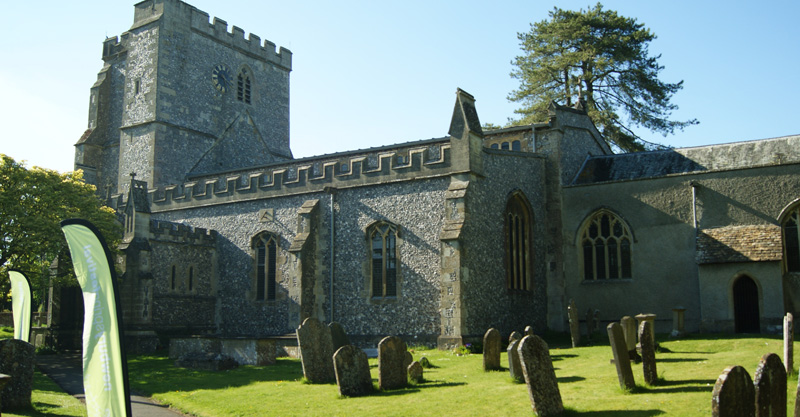Seating plan
About the venue
Within the present church fabric there is evidence for a large and elaborate church on this site before 900 AD. This ties in with the fact that in the early 10th century the Bishopric of Ramsbury was created and from that time, until 1058 when it was removed, there was a small cathedral establishment here. Priests are recorded in 1086 and these probably served all the settlements in the Hundred of Ramsbury. The present dedication probably dates from 1240 when two fairs were granted at the Invention and Exaltation of the Cross (3rd May and 14th September). The church had medieval chapels of ease at Axford and Membury. The church building is of flint and limestone and the oldest part is the long 13th century chancel. Population increased in the 13th and early 14th centuries resulting in aisles being added to the nave in the late 13th and the west end being largely rebuilt and the aisles widened in the 14th century. The present tower was also built in the 14th century. The Lady Chapel was added by 1405, possibly as an endowed chantry, and in 1459 it became home to the York and Wootten chantry. The clerestory was built in the early 16th century and a new, and lower, pitched roof replaced the earlier nave roof.
In the latter part of the 17th the curate was ejected after the Restoration and set up a Dissenters’ meeting and school, suffering much persecution from the vicar. In 1698-9 a west gallery was added, while in 1788 aisle galleries were built to take the increasing numbers. Throughout most of these centuries the church was cold and damp; a situation that continued until a Grundy’s patent underground stove was acquired in the early 1890s, keeping the church warm for the next 50 years. In 1838 an organ was given by local benefactress, Miss Read of Crowood House, while in 1854 £300 was spent on repairing the tower. Despite this the church was in poor condition in the latter half of the 19th century and there was an extensive restoration in 1890-3. The walls of the aisles were rebuilt, stepped buttresses and embattled parapets added, the plain south porch removed and replaced by an elaborate one in medieval style, and a porch added to the chancel. The galleries were removed and the floor relaid, but unfortunately the was no investigation of the foundations of the Saxon church. A fresco of St. Christopher was discovered on the 14th century north wall, which was in such bad condition that it could not be saved. The stucco rendering was removed from the tower and the structure strengthened. The cost was £6,000 and in addition Sir Francis Burdett paid for the restoration of the chancel at his own expense.
The present pews, by Mr Cook of Aldbourne, replaced the high box pews in 1903. In 1946 the Grundy stove was replaced at a cost of £575. The base of the font was carved by Thomas Meyrick in c.1842. The four bells that existed in 1553 were replaced in 1708 by six, cast by Abraham Rudhall of Gloucester.






